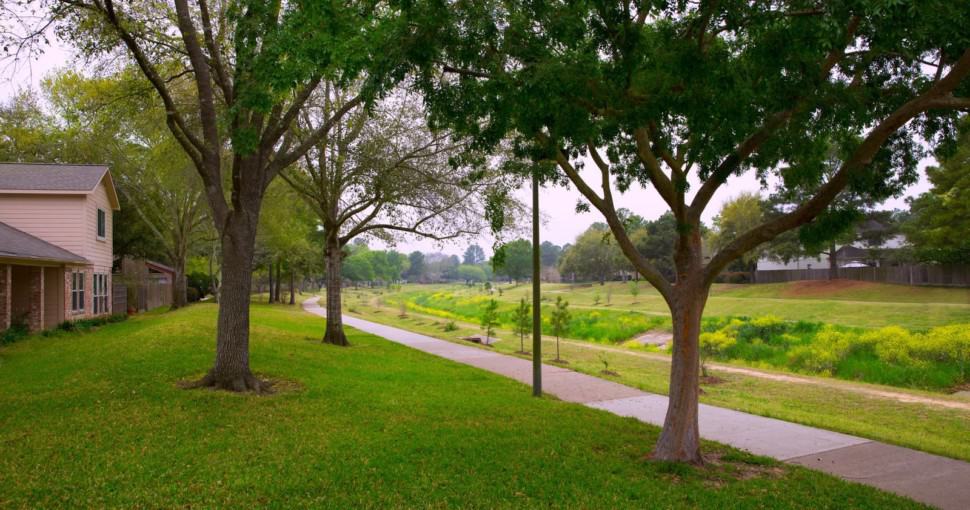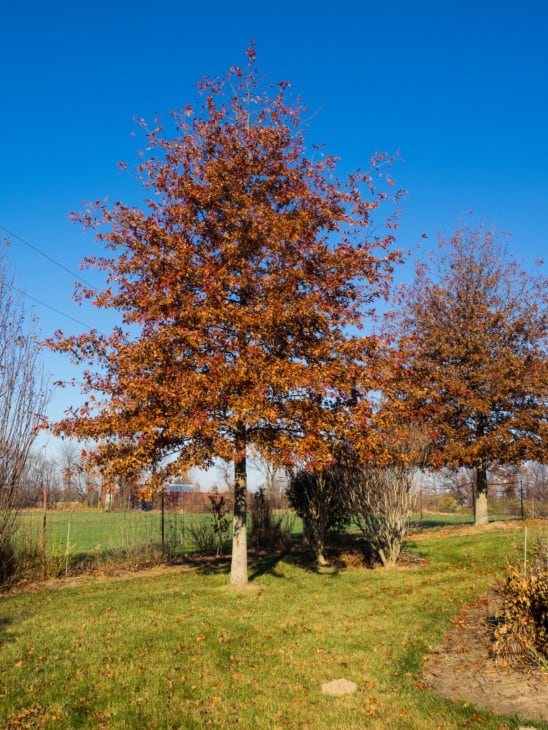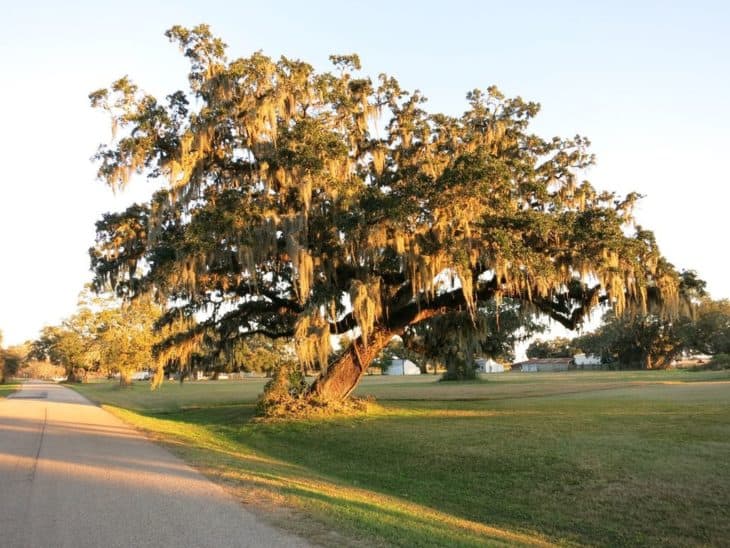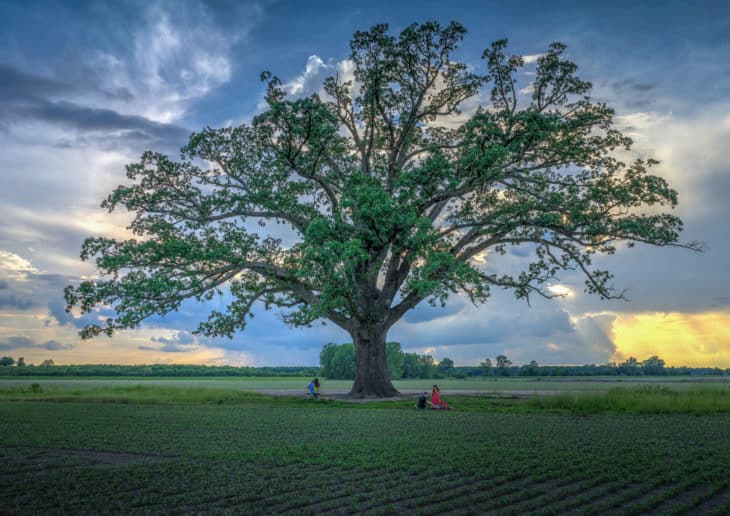Finding shade trees to plant in the yard is something thousands of people do every day, but before homeowners decide on the perfect tree, they have to consider where they live. Each area of the country has different soils and weather conditions, and North Texas is no different.
Contents
Living in North Texas means paying attention to the conditions in the area when looking for the perfect shade tree. Depending on the home, size of the yard, and soil condition, the homeowner has to know which trees to opt for and which ones to ignore.
One of the many advantages to homeowners planting shade trees in their yard is that it can both make a home easier to sell in the future and increase the value of that home in the end. The trees can also lower the temperature inside a home by 20° if they are placed in the right position outside.
People who plant shade trees near the house itself, near the patio, and near the air-conditioning unit often see a significant difference when it comes to their comfort level and their utility bill. But they also have to make sure the shade trees they choose are the right trees to plant.
Looking at the planting directions is important because most trees need certain soil conditions to grow properly, and for those people interested in the shade trees that do especially well in North Texas, below are a few of them.
1. Shumard Red Oak Trees
When homeowners are looking for a great shade tree, how perfect is it that they can find one that is native to the state of Texas? The Shumard red oak tree is a Texas native, and since it gets up to 60 feet in height, it makes the perfect shade tree for this part of the country.
Shumard red oaks have leaves that turn bright red and orange in the fall, making them some of the most beautiful trees in anyone’s yard. Even for homeowners who live in the middle of the city, they will do great because they can survive in a number of soil conditions and weather patterns.
These oak trees also grow quickly, adding two to three feet per year to their height. This means people won’t have to wait long to enjoy their shade and their beauty. They are the perfect tree for homeowners and even urban planners in the North Texas area.
2. Bald Cypress Trees
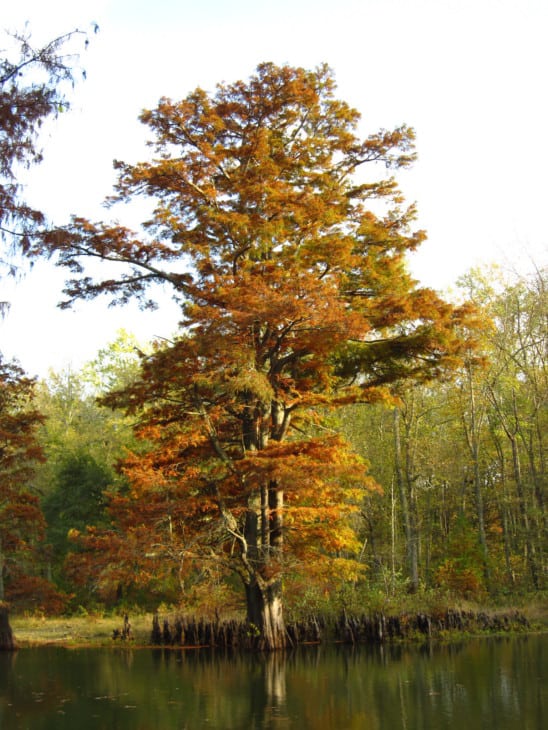
Bald Cypress trees grow to roughly 50 to 70 feet in height and, therefore, they make perfect shade trees in North Texas. They are conifers that are pyramid in shape, but they do lose their needles in the wintertime. Nevertheless, they provide a lot of shade during the hot summer months.
One of the things that makes the Bald Cypress tree so unique is that it can survive in both hot, dry climates and in very wet areas, including swamps. This makes it a great shade tree for the North Texas climate.
Bald Cypress trees are elegant-looking but are much tougher than they appear, so they can be counted on to be around for a number of years. This is one type of tree that is certain not to disappoint.
3. Autumn Blaze Maple Trees
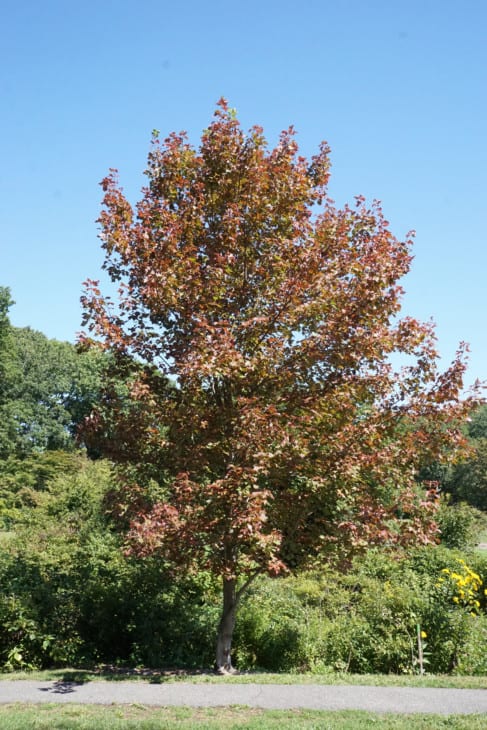
A hybrid of red and silver maple trees, these trees get their name from the fact that their leaves are a beautiful shade of bright red in the fall. They are striking trees that catch people’s attention, and they do very well in the North Texas climate.
These trees typically grow to 35 or 40 feet high, which is taller than other types of maple trees. They are also perfect for both city and county properties, and they will look great regardless of where they are planted.
One thing to note about these trees, however, is that their leaves are toxic to horses. They should never be planted in any location where horses might be able to get close enough to them to nibble on.
4. Live Oak Trees
Although mostly associated with the Deep South, live oak trees grow well in North Texas, in part because they are very sturdy and resilient, but the fact that they can live for hundreds of years is what attracts many people to them.
Live oak trees grow between 40 and 50 feet tall and are low-maintenance trees. They are also semi-evergreen trees, which means their leaves will drop in late winter or early spring, then gain new leaves in late spring or early summer – just in time for the summer heat!
Best of all, live oak trees make an impression. While they may not be the best choice for small yards, these are the perfect trees for large yards and for city parks and other public areas.
5. Monterrey Oak Trees
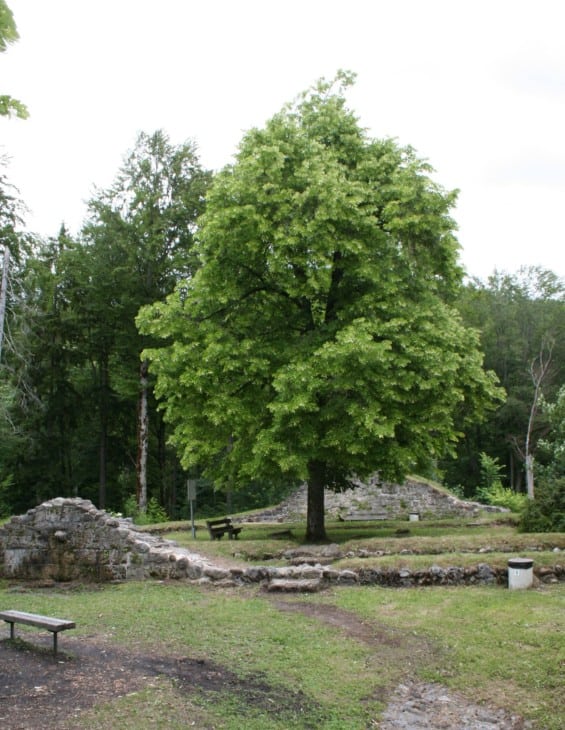
Also called a netleaf oak tree, Monterrey oak trees are gorgeous native trees that can get up to 60 feet once they’ve matured. They are considered medium-sized for oak trees because so many others get much taller, yet they are just as attractive as the others.
This is also a very low-maintenance oak tree that has very few problems and challenges. For people who love trees that they can essentially plant and forget about, this is the tree for them to consider.
The Monterrey oak tree is also resilient and doesn’t succumb to certain diseases like some other oak trees do, including oak wilt. This makes them a lot less stressful to take care of through the years.
6. Pecan Trees
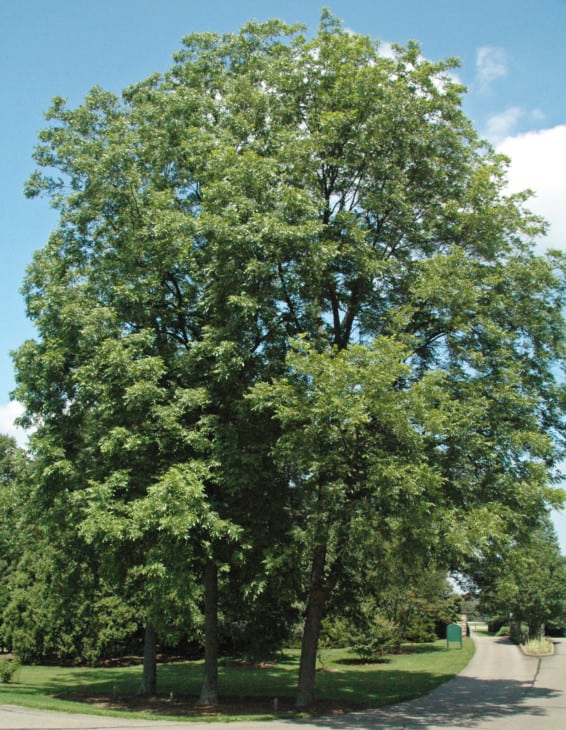
The pecan tree is the state tree of Texas, and with good reason. Not only is it a very long-lasting tree, but it is native to most of the state, including North Texas. It is a deciduous tree that people can get even more pecans out of if they feed them a little zinc as they’re growing.
There are many different types of pecan trees, and a lot of people choose the ones with the biggest and/or the sweetest nuts. Of course, it doesn’t matter which one people choose because pecan trees provide great shade during the warm summer months found in all of Texas.
Pecan trees are also popular with various wildlife, so for people who love to view wildlife in their yard, planting a pecan tree or two is a great idea. Best of all, the trees get 60 to 80 feet high and 60 to 80 feet wide, making them a massive tree that provides a great place to escape the heat when the sun is doing its work.
7. Bur Oak Trees
Bur oak trees grow 70 to 80 feet high and have an equally impressive spread, so they make perfect shade trees in any part of Texas, including the northern part. These are massive-looking trees that look great in anyone’s yard and work great, making them a smart purchase for everyone.
They also make great trees for people who live out in the county, mostly because they are very resistant to pollution, heat stress, and lots more. In fact, bur oaks can survive just about anything, which is why they thrive so well in North Texas.
People looking for a shade tree that is both beautiful and sturdy will love bur oak trees because they are reliable and meant to last. They are even good for beginning gardeners who don’t know much about growing trees because they are easy to maintain.

